Tales from a Master's Notebook Read online
CONTENTS
Cover
About the Book
About the Author
Contributors
Title Page
Foreword by Michael Woodxi
Introduction by Philip Horne
Father X by Paul Theroux
Silence by Colm Tóibín
Is Anybody There? by Rose Tremain
Canadians Can’t Flirt by Jonathan Coe
Old Friends by Tessa Hadley
The Road to Gabon by Giles Foden
Testaments by Lynne Truss
Wensleydale by Amit Chaudhuri
People Were So Funny by Susie Boyt
The Troll by Philip Horne
The Poltroon Husband by Joseph O’Neill
Acknowledgements
Appendix: Subjects from James’s Notebooks
Copyright
ABOUT THE BOOK
When Henry James died he left behind a series of notebooks filled with ideas for novels and stories that he never wrote. Now ten of our best contemporary authors and James enthusiasts have written new short stories based on these ‘germs’ of ideas. Differing dramatically in setting and style, these stories are modern interpretations of the richly suggestive and enticing notes that Henry James left behind, giving his ideas a fresh, original and sometimes irreverent spin.
Professor Philip Horne, a renowned authority on Henry James, has edited and introduced this collection, which also includes transcripts of James’s original jottings, allowing readers to trace the raw ideas through to their modern-day interpretations.
ABOUT THE AUTHOR
Henry James was born in New York in 1843 into a wealthy, eccentric, brilliant family. In his youth he travelled between Europe and America, studying in London, Paris, Geneva, Newport, Rhode Island and Bonn. He half-heartedly studied law at Harvard, which only confirmed his sense of his vocation: to read and write fiction.
His first novel, Watch and Ward, appeared in 1871 in the Atlantic Monthly. In 1875 James moved to Europe: Paris, then London, and later Rye in Sussex. Apart from his twenty completed novels and 112 short stories, James wrote plays, criticism, travel books, autobiographies – and a huge number of letters. He became a British citizen in 1915 and died in 1916.
CONTRIBUTORS
Susie Boyt was educated at St Catherine’s College Oxford and University College London where she specialised in the works of Henry James and the poetry of John Berryman. She is the author of six acclaimed novels and a much-loved memoir and has written a weekly column for the Financial Times Weekend for the last thirteen years. Her latest novel Love & Fame appeared in the autumn of 2017 from Virago. Her edition of The Turn of the Screw and Other Ghost Stories was published by Penguin Classics, also in 2017. Susie is also a director at the Hampstead Theatre in London.
Amit Chaudhuri is the author of seven novels, the latest of which is Friend of My Youth. He is also a critic and a musician and composer. He is a Fellow of the Royal Society of Literature. Awards for his fiction include the Commonwealth Writers Prize, the Betty Trask Prize, the Encore Prize, the Los Angeles Times Book Prize for Fiction, and the Indian government’s Sahitya Akademi Award. In 2013, he was awarded the first Infosys Prize in the Humanities for outstanding contribution to literary studies. He is Professor of Contemporary Literature at the University of East Anglia.
Jonathan Coe was born in Birmingham in 1961 and is the author of eleven novels, including What a Carve Up!, The House of Sleep, The Rotters’ Club and Number 11. His biography of B.S. Johnson, Like a Fiery Elephant, won the Samuel Johnson Prize in 2005.
Giles Foden is Professor of Creative Writing at the University of East Anglia and the University of Limerick. After growing up in Africa, the UK and Ireland, he held the Harper-Wood Studentship in English Poetry and Literature at St John’s College, Cambridge. In 1993, he became assistant editor of the Times Literary Supplement. Between 1996 and 2006 he worked on the books pages of the Guardian, during which period he published The Last King of Scotland, which won the 1998 Whitbread First Novel Award and was released as an Oscar-winning film in 2006. He is the author of three other novels and a work of narrative non-fiction. He was one of the judges of the Man Booker Prize in 2007 and of the IMPAC Prize in 2014. His writing has appeared in the New York Times, Granta and Esquire, among other publications.
Tessa Hadley has written six novels, three collections of short stories, and one full-length critical study, Henry James and the Imagination of Pleasure. Her novel The Past, published in the UK in 2015, won the Hawthornden Prize; a collection of stories, Bad Dreams, was published in 2017. She publishes short stories regularly in the New Yorker, reviews for the Guardian and the London Review of Books, and is a Professor of Creative Writing at Bath Spa University. In 2016 she was awarded a Windham-Campbell prize for Fiction.
Philip Horne teaches at University College London. He is the author of Henry James and Revision: The New York Edition (Oxford University Press, 1990); and editor of Henry James: A Life in Letters, Dickens’s Oliver Twist; and James’s The Tragic Muse and The Portrait of a Lady (all Penguin), as well as of James’s Autobiographies (Library of America, 2016). He is the founding General Editor of the Complete Fiction of Henry James for Cambridge University Press, for which he is editing James’s Notebooks and The Golden Bowl.
Joseph O’Neill is the author of four novels, most recently The Dog. A book of his short stories, Good Trouble, is published in 2018. He teaches at Bard College.
Paul Theroux, novelist and travel writer, was born in Medford, Massachusetts – the setting of Henry James’s story, ‘The Ghostly Rental’. He is the proud owner of the 24-volume New York Edition of the Novels and Tales of Henry James, and has written the Introduction to What Maisie Knew (Penguin). He is the author of The Mosquito Coast, and The Great Railway Bazaar, and many other books. His most recent travel book is Deep South: Four Seasons on Back Roads, and his most recent novel, Mother Land (2017).
Colm Tóibín is the author of nine novels, including The Master (a novel about Henry James) and House of Names, and two collections of stories. His work has been translated into more than thirty languages. He is a contributing editor at the London Review of Books, Irene and Sidney B. Silverman Professor of the Humanities at Columbia University and Chancellor of Liverpool University.
Rose Tremain was one of only five women to be selected for Granta’s original twenty ‘Best of Young British Novelists’ in 1983. Since then, her novels and short stories have been published in twenty-seven countries and won many prizes, including the Whitbread Award, the Prix Femina in France and the 2008 Orange Prize for Fiction. Her fourteenth novel, The Gustav Sonata, was published to wide acclaim in 2016. It won the National Jewish Book Award for Fiction in the United States and has been shortlisted for five other awards, including the South Bank Sky Arts Award for Literature 2017. She was made a CBE in 2007.
Lynne Truss is the author of several novels and works of non-fiction, including Eats, Shoots & Leaves, a bestselling book on punctuation. Her only other foray into the world of Henry James was a comic-Gothic short story for a Glyndebourne collection, in which an over-imaginative woman named her two rescue cats Miles and Flora, and lived to rue the day.
Michael Wood is professor emeritus of English and Comparative Literature at Princeton. His most recent books are Hitchcock: The Man Who Knew Too Much and On Empson.
Tales from a Master’s Notebook
Stories Henry James Never Wrote
EDITED AND INTRODUCED BY
Philip Horne
WITH A FOREWORD BY
Michael Wood
FOREWORD
Henry James’s Notebooks are full of what he liked to call ‘little ideas’, some of which he turned into
long and famous novels. Many became short stories and novellas, others remained notes only, possibilities abandoned or not even picked up. The ideas took the form of what James thought of as, to quote words used in the appendix to this book, ‘notions, subjects, incidents, fantasies, themes, situations’. ‘I have my head, thank God, full of visions’, he said in 1895. ‘One has never too many – one has never enough.’ There is something alluring about this plenitude, especially when we think of the visions that were never seen again, and remember perhaps James’s own marvellous description of the set-up for his story The Beast in the Jungle in August 1901: ‘That was what might have happened, and what has happened is that it didn’t.’
Sometimes James’s jottings take us quite a way into the resulting work, as with this prelude to The Turn of the Screw: ‘Note here the ghost-story told me at Addington (evening of Thursday 10th) by the Archbishop of Canterbury.’ That tale begins with the mention of two ghost-stories being told at a country house and continues with the telling of a third – the framing being crucial to the narrative. I mention the tale also because James was later rather dismissive of it in a way that is wonderfully instructive – he thought he could manage something ‘less grossly and merely apparitional’ – and because this present volume, Tales from a Master’s Notebook, is full of ghosts, if we think of them as matter that cannot die. I don’t wish to suggest the eleven remarkable stories presented here are narrowly focused, or that James wrote only about the undead. James wrote about many things, and our contemporary writers are different from him and from each other in their tone, theme, setting and much more. But James’s ambition for a more refined type of haunting, of a non-apparitional or not merely apparitional ghost, allows us to connect some very varied preoccupations.
Here, briefly described in the light of this thought, are instances you will find in this book of states between life and death: a memory that returns, with real difficulty, as a literal ghost, not seen but heard; a conversation that will never be reported; a secret enemy; a secret life; a test of courage that is also a test of worldliness; a dream of the past as a rich, untouchable fantasy; a waiting for what will live only as long as it is waited for, not consummated. There are also evocations of the clumsiness of failed misbehavior; of the double fear of being found out and of leaving no trace; of an attempted rescue of a life that may not have needed rescuing; of deep and shallow interpretations, perhaps both correct, of a dead man’s collection of objects.
The settings of the stories range from Arizona to Norfolk, and from Calcutta to Gabon. The voices are witty, distant, knowing, baffled, confident, the literary strategies very varied. In no instance do we feel the contemporary writer has done what James might have done, so there is, as Philip Horne says, no element of pastiche or even of homage here. This is what the little word ‘from’ means in the title. We are closest to what James himself thinks – or a persuasive version of what James himself thinks – in Colm Tóibín’s story in this volume. James tells Lady Gregory that he often
noted down something interesting that had been said to him, and on occasion the germ of a story had come to him from a most unlikely source, and other times, of course, from a most obvious and welcome one. He liked to imagine his characters, he said, but he also liked that they might have lived already, to some small extent perhaps, before he painted a new background for them and created a new scenario.
This offers an image of what all the authors here are doing, with the emphasis on the repeated word ‘new’. The relation of idea to story is very subtle, and conceptually similar to that other kind of haunting James aspired to with his non-apparitional ghost. Real, historical people inhabit many of the anecdotes that are told to James. Although they have already lived, they do not become James’s characters until he has found a new background and scenario for them. Only then do they become the people James likes to think may have already lived, with all the entangled possibilities of a fictional existence now lying in wait for them.
The life of all the stories in this volume begins, in a sense, with the first sentence of each. They have no past. Or more precisely they had no past until their authors chose one – or were chosen by one – and went on to do something with it. In that process each of these stories too seems to live, to occupy a world the author already knows, either through their experience or imagination. This feature connects them with Henry James not simply through lineage or debt but through a common practice of the art of fiction, a passion for which, as he said in The Future of the Novel in 1899, is only ‘written in the air’ – for the illusive, ‘the record of what, in any particular case, has not been’. These notebook entries are in their own way records of ‘what … has not been’, what was never even fully imagined. Now they have taken on a reality that only the imagination can provide: these contemporary authors have given them further fictional life, or half-life, tracing the work of memory, fear, fantasy, assumption, expectation and other ghostly agents and agencies, in a way James might have appreciated.
Michael Wood, 2018
INTRODUCTION
Where do stories come from? What makes an idea work as a story – for a reader or, not quite the same thing, for a writer? Readers are always asking writers, ‘Where do you get your ideas?’ – and although in one way there are easy answers (from the newspapers, from experience, from friends) it is hard to put one’s finger on what makes an idea click. How can one tell the difference between a good or workable idea and a bad, or between one that will only work for one writer and one that could work for many? How do stories grow? If they’re left too long, do they lose their potency – as some old packet of seeds may have, found at the back of a potting shed – or can they still, in new earth, give rise to fresh life?
Questions like these have always been at the back of my mind during a professional life much of which has been focused on the astonishingly varied career and output of Henry James, who between his birth in New York in 1843 and his death in London early in 1916 made himself one of the greatest writers of the modern period – in fiction and criticism, in autobiography and letters. He knew or met Dickens and George Eliot, Flaubert and Turgenev, Woolf and Pound, Oscar Wilde and Theodore Roosevelt; but more importantly, he drew on his rich experiences of the world for ideas that would drive fictions, and restlessly experimented with the possibilities of tale, novella and novel. Across the decades, from The Portrait of a Lady, his first masterpiece of 1881, to The Ambassadors of 1903, from ‘Daisy Miller’ of 1878 through ‘The Aspern Papers’ of 1888 and ‘The Turn of the Screw’ of 1898 to ‘The Jolly Corner’ of 1908, he maintained a dazzling flow of fresh invention – which we can follow by seeing him play with innumerable ideas in his fascinating notebooks.
The questions of where stories come from and what makes them work have been given a new urgency for me by the process of re-editing these notebooks from scratch for a new scholarly edition by Cambridge University Press, still some way off – which involves transcribing the texts afresh from James’s often execrable handwriting, annotating to a new level of detail, correcting old errors – and doubtless, though as little as possible, introducing some new ones. James struggled to acquire the habit of the notebook – but it became his way both of working ideas out under the pressure of pen on paper (for him ‘expression’ meant squeezing things out) and of preserving them, dropping them to mature into what he calls in the 1907 Preface to The American ‘the deep well of unconscious cerebration’, an obscurity in which rich and strange transformations could take place. The notebooks are fascinating, private documents in which we see James’s intimate practice of his art. Here the inner logic of the material is gradually seen emerging, so that for instance we see the end of The Portrait of a Lady take its present form, or what James first considers ‘a real little situation for a short tale’ can swell into a novel of 130,000 words like The Awkward Age (1899). The notebooks are also, more generally, exemplary, heroic texts for anyone interested in the workings of the creative imagination. They were
a refuge for James, in which he could commune with himself and his art; and in them he would give himself the encouragement that the critics often withheld, as when, in January 1894, he told himself that the more he went on the more he found
that the only balm and the only refuge, the real solution of the pressing question of life, are in this frequent, fruitful, intimate battle with the particular idea, with the subject, the possibility, the place.
In other words, for James the problems of life were only solved in art – by plunging into work.
There are only nine surviving notebooks in the Houghton Library at Harvard – they have recently been put up online if you want to look at them and see James’s original hieroglyphics. What survives is just a small fraction of the mountain of volumes he must have filled, most of which doubtless perished in one or other of the great bonfires of letters and documents whose smoke, in his last years, drifted from the garden of the author’s home near the Sussex coast as he sorted and purged his archive. The earliest entry dates from 1878, two years after James published his first novel in book form, the last from 1911, five years before his death. They all show him following his own dictum in his great 1884 essay ‘The Art of Fiction’: ‘Try to be one of the people on whom nothing is lost!’ Some entries record bare formulas for possible stories, ‘germs’ as he often calls them (meaning seeds), gathered from the newspapers, or dinner party conversations, or from observation; others set down autobiographical memories and reflections; yet others plot out narrative developments and approaches, sometimes in painstaking, chapter-by-chapter detail. Why these particular volumes survive and the rest were chucked into the flames at Lamb House is something of a puzzle. The theory I find most persuasive is that James preserved notebooks containing either ideas he hadn’t yet used and to which he thought he might return, or autobiographical passages like the deeply moving account of his visit to the graves of his parents and sister and a brother in Cambridge, Massachusetts in November 1904: ‘Everything was there; everything came; the recognition, stillness, the strangeness, the pity & the sanctity & the terror, the breath-catching passion & the divine relief of tears’. At any rate, one fact that came to preoccupy me was the survival in the notebooks of over sixty subjects for fictions that James never got so far as writing – sometimes, no doubt, for lack of time, sometimes apparently because he couldn’t find the right turns for the narrative, or the subject somehow lost its interest for him.

 Astounding Stories, March, 1931
Astounding Stories, March, 1931 Astounding Stories, February, 1931
Astounding Stories, February, 1931 Futuria Fantasia, Spring 1940
Futuria Fantasia, Spring 1940 The King's Daughter and Other Stories for Girls
The King's Daughter and Other Stories for Girls Uncanny Tales
Uncanny Tales Masters of Noir: Volume Two
Masters of Noir: Volume Two Witty Pieces by Witty People
Witty Pieces by Witty People Sylvaneth
Sylvaneth Space Wolves
Space Wolves Hammerhal & Other Stories
Hammerhal & Other Stories The Fantasy Fan, March, 1934
The Fantasy Fan, March, 1934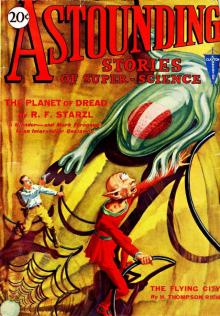 Astounding Stories of Super-Science, August 1930
Astounding Stories of Super-Science, August 1930 Astounding Stories, August, 1931
Astounding Stories, August, 1931 The Burden of Loyalty
The Burden of Loyalty Return to Wonderland
Return to Wonderland Anthology - A Thousand Doors
Anthology - A Thousand Doors The Fantasy Fan, October 1933
The Fantasy Fan, October 1933 Astounding Stories, June, 1931
Astounding Stories, June, 1931 Southern Stories
Southern Stories Astounding Stories of Super-Science, May, 1930
Astounding Stories of Super-Science, May, 1930 The Fantasy Fan December 1933
The Fantasy Fan December 1933 Adventures in Many Lands
Adventures in Many Lands The Fantasy Fan February 1934
The Fantasy Fan February 1934 The Fantasy Fan November 1933
The Fantasy Fan November 1933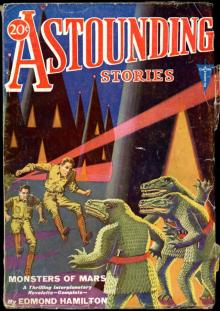 Astounding Stories, April, 1931
Astounding Stories, April, 1931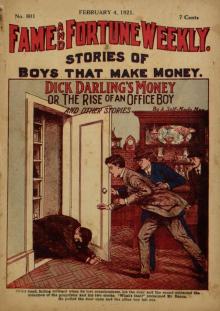 Fame and Fortune Weekly, No. 801, February 4, 1921
Fame and Fortune Weekly, No. 801, February 4, 1921 Astounding Stories of Super-Science, November, 1930
Astounding Stories of Super-Science, November, 1930 Astounding Stories of Super-Science January 1931
Astounding Stories of Super-Science January 1931 A Monk of Fife
A Monk of Fife Astounding Stories of Super-Science September 1930
Astounding Stories of Super-Science September 1930 Astounding Stories of Super-Science July 1930
Astounding Stories of Super-Science July 1930 Astounding Stories of Super-Science, June, 1930
Astounding Stories of Super-Science, June, 1930 Astounding Stories of Super-Science, October, 1930
Astounding Stories of Super-Science, October, 1930 Astounding Stories of Super-Science, March 1930
Astounding Stories of Super-Science, March 1930 The Fantasy Fan January 1934
The Fantasy Fan January 1934 The Fantasy Fan September 1933
The Fantasy Fan September 1933 Astounding Stories of Super-Science February 1930
Astounding Stories of Super-Science February 1930 Astounding Stories, May, 1931
Astounding Stories, May, 1931 Strange Stories of Colonial Days
Strange Stories of Colonial Days Golden Age of Science Fiction Vol IX
Golden Age of Science Fiction Vol IX Astounding Stories of Super-Science, December 1930
Astounding Stories of Super-Science, December 1930 Evolutions: Essential Tales of the Halo Universe
Evolutions: Essential Tales of the Halo Universe Good Stories Reprinted from the Ladies' Home Journal of Philadelphia
Good Stories Reprinted from the Ladies' Home Journal of Philadelphia Dragons!
Dragons!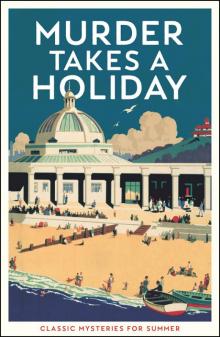 Murder Takes a Holiday
Murder Takes a Holiday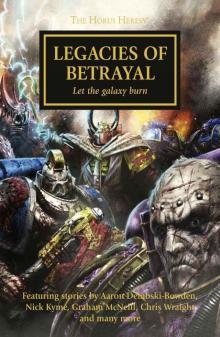 Legacies of Betrayal
Legacies of Betrayal STAR WARS: TALES FROM THE CLONE WARS
STAR WARS: TALES FROM THE CLONE WARS Strange New Worlds 2016
Strange New Worlds 2016 Lippincott's Magazine, August, 1885
Lippincott's Magazine, August, 1885 Golden Age of Science Fiction Vol X
Golden Age of Science Fiction Vol X Hot Stuff
Hot Stuff Santa Wore Spurs
Santa Wore Spurs Paranormal Erotica
Paranormal Erotica Tangled Hearts: A Menage Collection
Tangled Hearts: A Menage Collection Sweet Tea and Jesus Shoes
Sweet Tea and Jesus Shoes The Journey Prize Stories 25
The Journey Prize Stories 25 Wild Western Tales 2: 101 Classic Western Stories Vol. 2 (Civitas Library Classics)
Wild Western Tales 2: 101 Classic Western Stories Vol. 2 (Civitas Library Classics) (5/15) The Golden Age of Science Fiction Volume V: An Anthology of 50 Short Stories
(5/15) The Golden Age of Science Fiction Volume V: An Anthology of 50 Short Stories (4/15) The Golden Age of Science Fiction Volume IV: An Anthology of 50 Short Stories
(4/15) The Golden Age of Science Fiction Volume IV: An Anthology of 50 Short Stories Ten Journeys
Ten Journeys The Boss
The Boss The Penguin Book of French Poetry
The Penguin Book of French Poetry Golden Age of Science Fiction Vol VIII
Golden Age of Science Fiction Vol VIII His Cinderella Housekeeper 3-in-1
His Cinderella Housekeeper 3-in-1 The Magazine of Fantasy & Science Fiction - July/August 2016
The Magazine of Fantasy & Science Fiction - July/August 2016 PYRATE CTHULHU - Tales of the Cthulhu Mythos (vol.2)
PYRATE CTHULHU - Tales of the Cthulhu Mythos (vol.2) Tales from a Master's Notebook
Tales from a Master's Notebook April 1930
April 1930 New Erotica 6
New Erotica 6 Damocles
Damocles The Longest Night Vol. 1
The Longest Night Vol. 1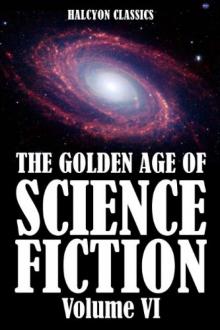 The Golden Age of Science Fiction Volume VI: An Anthology of 50 Short Stories
The Golden Age of Science Fiction Volume VI: An Anthology of 50 Short Stories (1/15) The Golden Age of Science Fiction: An Anthology of 50 Short Stories
(1/15) The Golden Age of Science Fiction: An Anthology of 50 Short Stories Eye of Terra
Eye of Terra ONCE UPON A REGENCY CHRISTMAS
ONCE UPON A REGENCY CHRISTMAS Nexus Confessions
Nexus Confessions Passionate Kisses
Passionate Kisses War Without End
War Without End Doctor Who: Time Lord Fairy Tales
Doctor Who: Time Lord Fairy Tales Gotrek and Felix: The Anthology
Gotrek and Felix: The Anthology WESTERN CHRISTMAS PROPOSALS
WESTERN CHRISTMAS PROPOSALS The Journey Prize Stories 27
The Journey Prize Stories 27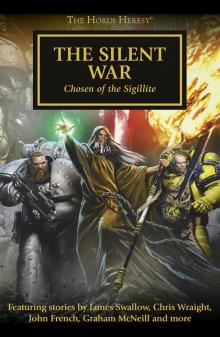 The Silent War
The Silent War Liaisons
Liaisons Ellora's Cavemen: Tales from the Temple IV
Ellora's Cavemen: Tales from the Temple IV Ellora's Cavemen: Tales from the Temple II
Ellora's Cavemen: Tales from the Temple II Some of the Best From Tor.com, 2013 Edition: A Tor.Com Original
Some of the Best From Tor.com, 2013 Edition: A Tor.Com Original Urban Occult
Urban Occult Fractures
Fractures The Stories: Five Years of Original Fiction on Tor.com
The Stories: Five Years of Original Fiction on Tor.com The Penguin Book of Modern British Short Stories
The Penguin Book of Modern British Short Stories Mortarch of Night
Mortarch of Night The Portable Nineteenth-Century African American Women Writers
The Portable Nineteenth-Century African American Women Writers The Golden Age of Science Fiction Volume VII: An Anthology of 50 Short Stories
The Golden Age of Science Fiction Volume VII: An Anthology of 50 Short Stories Holy Bible: King James Version, The
Holy Bible: King James Version, The Eight Rooms
Eight Rooms sanguineangels
sanguineangels DarkNightsWithaBillionaireBundle
DarkNightsWithaBillionaireBundle Casserole Diplomacy and Other Stories
Casserole Diplomacy and Other Stories How I Survived My Summer Vacation
How I Survived My Summer Vacation Alfred Hitchcock Presents: 16 Skeletons From My Closet
Alfred Hitchcock Presents: 16 Skeletons From My Closet Lords, Ladies, Butlers and Maids
Lords, Ladies, Butlers and Maids The B4 Leg
The B4 Leg Ellora's Cavemen: Tales from the Temple I
Ellora's Cavemen: Tales from the Temple I 2014 Campbellian Anthology
2014 Campbellian Anthology There Is Only War
There Is Only War Obsidian Alliances
Obsidian Alliances 12 Gifts for Christmas
12 Gifts for Christmas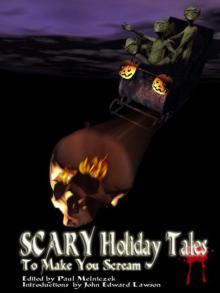 Scary Holiday Tales to Make You Scream
Scary Holiday Tales to Make You Scream 25 For 25
25 For 25 The Plagues of Orath
The Plagues of Orath And Then He Kissed Me
And Then He Kissed Me Star Trek - Gateways 7 - WHAT LAY BEYOND
Star Trek - Gateways 7 - WHAT LAY BEYOND Laugh Your Head Off Again and Again
Laugh Your Head Off Again and Again The Balfour Legacy
The Balfour Legacy Golden Age of Science Fiction Vol XI
Golden Age of Science Fiction Vol XI (3/15) The Golden Age of Science Fiction Volume III: An Anthology of 50 Short Stories
(3/15) The Golden Age of Science Fiction Volume III: An Anthology of 50 Short Stories Shas'o
Shas'o Astounding Science Fiction Stories: An Anthology of 350 Scifi Stories Volume 2 (Halcyon Classics)
Astounding Science Fiction Stories: An Anthology of 350 Scifi Stories Volume 2 (Halcyon Classics) Twists in Time
Twists in Time Meduson
Meduson The Magazine of Fantasy & Science Fiction - August 1980
The Magazine of Fantasy & Science Fiction - August 1980 The Journey Prize Stories 22
The Journey Prize Stories 22 The Book that Made Me
The Book that Made Me Angels of Death Anthology
Angels of Death Anthology Ask the Bones
Ask the Bones Emergence
Emergence Beware the Little White Rabbit
Beware the Little White Rabbit Xcite Delights Book 1
Xcite Delights Book 1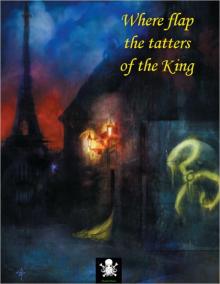 Where flap the tatters of the King
Where flap the tatters of the King The Journey Prize Stories 21
The Journey Prize Stories 21 Tales of the Slayer, Volume II
Tales of the Slayer, Volume II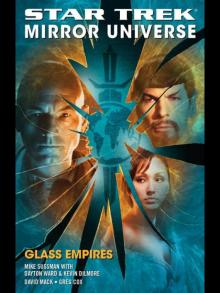 Glass Empires
Glass Empires Golden Age of Science Fiction Vol XII
Golden Age of Science Fiction Vol XII (2/15) The Golden Age of Science Fiction Volume II: An Anthology of 50 Short Stories
(2/15) The Golden Age of Science Fiction Volume II: An Anthology of 50 Short Stories Fairytale Collection
Fairytale Collection Angels!
Angels! Golden Age of Science Fiction Vol XIII
Golden Age of Science Fiction Vol XIII